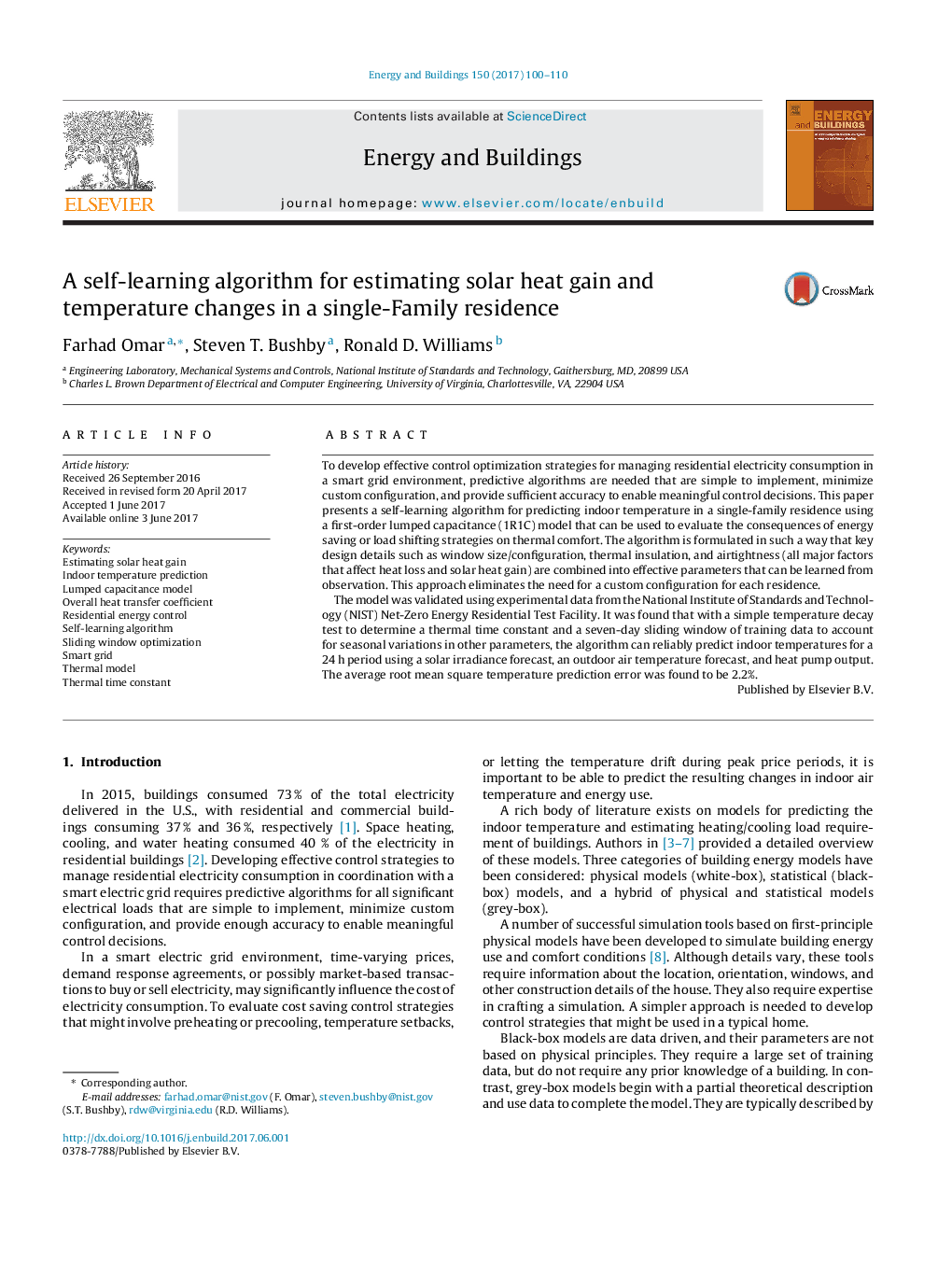| Article ID | Journal | Published Year | Pages | File Type |
|---|---|---|---|---|
| 4914106 | Energy and Buildings | 2017 | 11 Pages |
Abstract
The model was validated using experimental data from the National Institute of Standards and Technology (NIST) Net-Zero Energy Residential Test Facility. It was found that with a simple temperature decay test to determine a thermal time constant and a seven-day sliding window of training data to account for seasonal variations in other parameters, the algorithm can reliably predict indoor temperatures for a 24Â h period using a solar irradiance forecast, an outdoor air temperature forecast, and heat pump output. The average root mean square temperature prediction error was found to be 2.2%.
Keywords
Related Topics
Physical Sciences and Engineering
Energy
Renewable Energy, Sustainability and the Environment
Authors
Farhad Omar, Steven T. Bushby, Ronald D. Williams,
